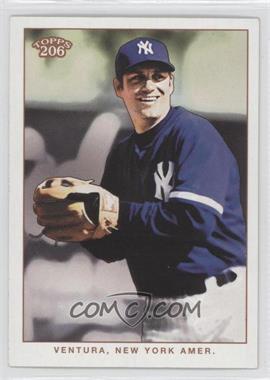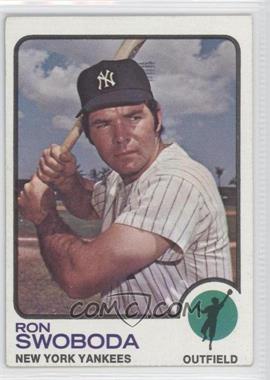May 26 2013 12:41 AM
















































































Master Index of Archived Threads
WARNING!! Thread Contents May be Hazardous to your MFeYeS!!
| batmagadanleadoff May 26 2013 12:41 AM |
|
|
| batmagadanleadoff May 26 2013 12:47 AM Re: WARNING!! Thread Contents May be Hazardous to your MFeYe |
|
|
Klapisch: Looking for some juicy story lines in the Subway Series
http://www.northjersey.com/sports/Klapi ... eries.html
|
| G-Fafif May 26 2013 01:50 AM Re: WARNING!! Thread Contents May be Hazardous to your MFeYe |
|
|
Why must Klapisch suck so ever-loving hard?
Hey, disphit: Everybody's attendance is calculated that way. It's BS, but it's everybody's BS, not a charming Wilpon defect. The Mets are going to honor Rivera before Tuesday's game. I hope it's by shoving Klapisch's head ever further up his Rivera's ass.
|
| batmagadanleadoff May 26 2013 06:09 AM Re: WARNING!! Thread Contents May be Hazardous to your MFeYe |
|
|
The Official Attendance Can Become Empty of Meaning
http://bats.blogs.nytimes.com/2012/09/2 ... f-meaning/ _______________ At least the Mets can say that they aren't selling less tickets than last season. For whatever that's worth.
|
| Ceetar May 26 2013 06:55 AM Re: WARNING!! Thread Contents May be Hazardous to your MFeYe |
|
[url]http://www.baseball-reference.com/leagues/current_attendance.shtml
|
| Gwreck May 26 2013 07:14 AM Re: WARNING!! Thread Contents May be Hazardous to your MFeYe |
|
Who's next to Jack Aker?
|
| Gwreck May 26 2013 07:36 AM Re: WARNING!! Thread Contents May be Hazardous to your MFeYe |
|
Also, Benitez?
|
| batmagadanleadoff May 26 2013 11:05 AM Re: WARNING!! Thread Contents May be Hazardous to your MFeYe |
|
|
| Frayed Knot May 26 2013 12:22 PM Re: WARNING!! Thread Contents May be Hazardous to your MFeYe |
|
|
Until 1999, National League clubs reported attendance based on turnstile counts and the American League teams reported paid attendance. In 2000, all clubs started reporting the number of tickets sold because those figures were used to calculate revenue sharing between the clubs, according to Major League Baseball
Francesa has been on this bandwagon too, implying, often while barely keeping himself from outright stating, that the Mets are the only ones to do so and probably invented the whole scam.
|
| Ashie62 May 26 2013 12:23 PM Re: WARNING!! Thread Contents May be Hazardous to your MFeYe |
||
|
Easy Greg...we would both feel better if the Mets won a few of these series...
|
| vtmet May 26 2013 01:23 PM Re: WARNING!! Thread Contents May be Hazardous to your MFeYe |
|
so...the guy that runs Metsblog was a metrosexual Yankee in the 70/80's?
|
| G-Fafif May 26 2013 05:59 PM Re: WARNING!! Thread Contents May be Hazardous to your MFeYe |
|
|
That change was made in 1993, the year the woebegone Mets were drawing reasonable-sounding crowds of "17,000" or so in late September for midweek night games when there were clearly no more than a few thousand in the house.
|
| batmagadanleadoff May 26 2013 06:13 PM Re: WARNING!! Thread Contents May be Hazardous to your MFeYe |
|||
|
Right you are, sez the LA Times.  Attendance figures that count tickets sold, not turnstile clicks, make it hard for fans to reconcile what they hear with the empty seats they see Series: First in a series of occasional stories as The Times examines attendance in sports. By Bill Shaikin, Times Staff Writer August 23, 2005
http://www.latimes.com/la-sp-attendance ... full.story
|
| batmagadanleadoff May 26 2013 06:19 PM Re: WARNING!! Thread Contents May be Hazardous to your MFeYe |
|
I might be missing something here, but I don't see why the revenue sharing system requires MLB teams to equate attendance with tickets sold. It's all so Orwellian. What? Teams can't properly chip in a third of game revenue into the pool if they release the tickets used figures? It's an excuse, that's all it seems to be.
|
| G-Fafif May 26 2013 06:27 PM Re: WARNING!! Thread Contents May be Hazardous to your MFeYe |
|
|
Yeah, now that you mention it, those would seem to be mutually exclusive issues.
|
| Swan Swan H May 26 2013 06:39 PM Re: WARNING!! Thread Contents May be Hazardous to your MFeYe |
|
I disagree. Tickets sold equals ticket revenue, not tickets used. If I sell 25,000 tickets at $40 each I have received $1 million, whether 25,000 or 2,500 people show up, and that $1 million is the number that should get used for revenue sharing.
|
| batmagadanleadoff May 26 2013 06:43 PM Re: WARNING!! Thread Contents May be Hazardous to your MFeYe |
|
|
I understand everything you write, except your conclusion. Nothing that you write prevents teams from releasing the true attendance figures (tickets used).
|
| Swan Swan H May 26 2013 06:52 PM Re: WARNING!! Thread Contents May be Hazardous to your MFeYe |
||
|
My sense is that the since the AL always did it that way, when the division between the leagues began to crumble it was the easy way out to report the higher number across the board. Teams reporting both paid and turnstile attendance would definitely make sense, but I think the fans deserve to know how many tickets are sold, as it speaks to the revenue the team is receiving and should be expected to turn back into building the team.
|
| Frayed Knot May 26 2013 07:04 PM Re: WARNING!! Thread Contents May be Hazardous to your MFeYe |
|
|
Yes, the AL long reported tickets sold while the NL gave the asses-in-seats number. Actually I remember the Murph/Ralph/Lindsey crew reporting BOTH paid and actual. And, yes, it was the gradual merging of the leagues which prompted the change to one system.
|
| Edgy MD May 27 2013 07:02 AM Re: WARNING!! Thread Contents May be Hazardous to your MFeYe |
|
Yes, they did. And there's nothing stopping them from reporting both numbers. But there's nothing motivating them either.
|
| Edgy MD May 27 2013 07:05 AM Re: WARNING!! Thread Contents May be Hazardous to your MFeYe |
|
I guess it's a photo from earlier years for Cowan with handpainted pinstripes.
|
| G-Fafif May 27 2013 09:13 AM Re: WARNING!! Thread Contents May be Hazardous to your MFeYe |
|
Nothing feels more propagandistic than reporting that a baseball game was played in front of a crowd (or "an announced crowd") of 23,149 when there are clearly no more than half that figure in the park, no matter how many are off acquiring a refreshment or using the facilities. The bottom line may be what matters in reporting to the league office (singular) but part of the historical record is how many actually bore witness to a given game.
|
| Swan Swan H May 27 2013 09:37 AM Re: WARNING!! Thread Contents May be Hazardous to your MFeYe |
|
|
Go right ahead. I'm saving my wishes for world peace, the return of Suzy-Qs to my supermarket, and a 2014 Anthony Recker swimsuit calendar.
|
| batmagadanleadoff May 27 2013 10:11 AM Re: WARNING!! Thread Contents May be Hazardous to your MFeYe |
||
|
 The pinstripes Cowan wears on his '69 Topps card are Metly. His photo wasn't retouched. Topps used the generic capless headshot, supposedly stripped of enough logo detail to suggest any team. After a certain point in the production process, Topps would not be bothered with obtaining a photo of the player in his new team's uni. Cowan hadn't been a Met since the Summer of '65, BTW. Topps probbaly chose the Met capless shot for the '69 card because the Mets were the last team Cowan played for that wore pinstripes. Ironically, Topps never produced a Met card for Cowan. Cowan appears on his '65 card -his only Met season - as a Cub. Cowan was not in the '66 Topps set, no longer a Met by then. 
You missed Maddox '75.  More MFY's at Shea. How humbling it must have been. If historical trends continue, the MFY's will someday, play a season at Citi Field: they've played entire seasons in every other Mets stadium.    
|
| batmagadanleadoff May 27 2013 10:43 AM Re: WARNING!! Thread Contents May be Hazardous to your MFeYe |
|
|
Interesting snippet from the LA TImes article posted above on attendance figures. I missed it the first time around. (Skim mode)
|
| Edgy MD May 27 2013 12:01 PM Re: WARNING!! Thread Contents May be Hazardous to your MFeYe |
|
Cowan seems to have left his chin bulbs in Chicago, along with his last modestly productive National League season.
|